This article was written by Amy Firth, a leader on the Transposition exchange. Amy is a young person, working as part of the Time To Shine team within Creative Scotland.
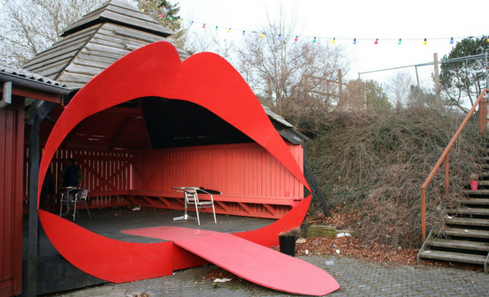
Scotland’s National Youth Arts Advisory Group (NYAAG) is a group of 30 young people managed by Young Scot, who work with Creative Scotland and other partners to help determine the priorities of the youth arts sector, regionally, nationally and internationally.
In April 2018, eight members of NYAAG embarked on Transposition, an Erasmus exchange, visiting their Danish counterparts Taenketank for Ungekultur (TUK) who work with Ministeriet Slots- og Kulturstyrelsen, the Agency for Culture and Palaces.
The project is designed to explore the ways in which the agency of both these panels could be strengthened. For Transposition, TUK designed a busy programme of activities, giving NYAAG an overview of youth culture in Denmark and insight into the emphasis on culture entrepreneurialism as well as the breadth of educational routes and the powerful political activism of young Danes.
We have learned to take a look at ourselves and be able to see the great things we have in our country and in our own lives- Cahal Menzies, NYAAG member
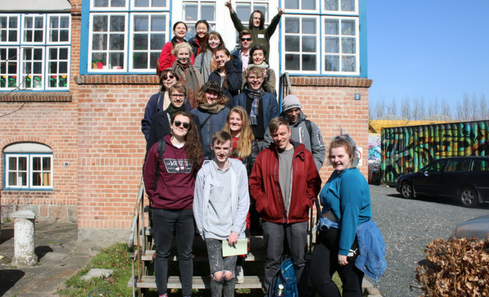
A cornerstone of youth culture in Denmark is the Youth Culture House - a building in each municipality which is gifted to young people as a space for creative and cultural activity. Each house is unique and there is a universal sense of freedom to run and use these spaces as the young people see fit.
For example, Walker Youth House (Middelfart) felt very entrepreneurial, with well-equipped spaces for project development as well as performance, recording and practice spaces; and Vaerket Youth House (Veijle) had relaxed spaces for socialising and creativity. Although this incredible resource was available, the young volunteers identified it was often hard to attract new young people to the Culture Houses.
While not without its problems, the Culture House model is an example of the level of trust and agency granted to young people in Denmark. There is a real sense of cultural entrepreneurialism and support structures in place which allow young people to self-organise and realise their visions.
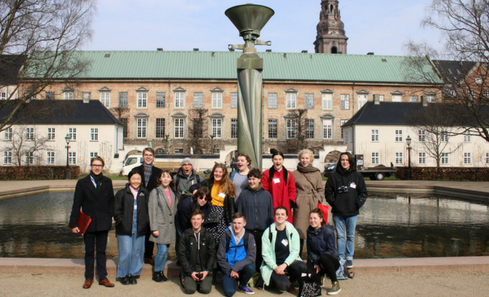
As well as youth-led cultural spaces, we visited some large institutions who involve young people within their organisational structure. One of our first visits was to ULK, a young people’s laboratory operating within the National Gallery of Copenhagen.
ULK are a collective of young people delivering an alternative programme of projects and events alongside the gallery programme. Turning the traditions of the museum on its head, ULK are disruptors and provide a provocative and critical voice within the gallery, inviting the public to throw darts at reproduction paintings and dying the fountain a menstrual red.
We also visited Ragnarock (Roskilde), Denmark’s museum for pop, rock and youth culture. A contrast to the more traditional National Gallery, this brilliant museum profiles the grassroots sub-cultures of music, explored through an interactive and immersive museum space. Young people are embedded within the narrative of this museum and it recognises and celebrates them as a driving cultural force.
Naturally, education became a big topic of conversation between the NYAAG and TUK. Through visits to a variety of education organisations, it seemed evident that young people in Denmark were being given more freedom and time to explore their creative interests, which felt like a refreshing contrast to the academic focus of Scotland’s educational system.
Students from Super16 (Copenhagen), an internationally recognised alternative film school, told us about their educational model; students here are awarded the agency to manage both the educational and operational aspects of the school, allowing them to govern the shape their own education.
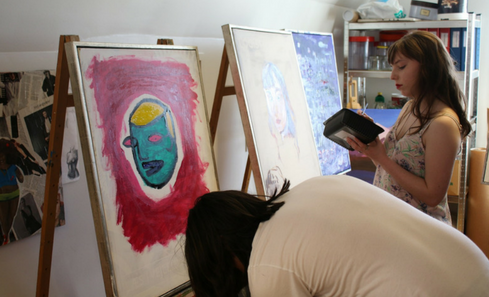
Taking a more holistic approach, the International Folk High School (Helsingør) is founded on the principle of ‘learning to learn’ and offers an alternative arts and humanities education based on the importance of civic responsibility. At Frontrunners (Aarhus), young people are encouraged to be active cultural producers. The open platform for cultural projects offers government subsidised placements to plan and deliver cultural activity.
The diversity of these educational routes permits young people to access education appropriate to their own individual requirements, which results in a greater number of people engaging in education. Additionally, we noted that despite the differences in these routes, there was an identifiable trend of flat democratic structures. Speculatively, allowing young people to govern their own educational system engages them in making change that affects them, which empowers them to also participate in wider political issues.
Political activism is at the heart of youth culture in Denmark. An example of this can be seen in The Youth Democracy Festival (Copenhagen) which facilitates meetings between young people and decision makers, boosting the political self-esteem of young Danes. The culmination is an annual festival which aspires to reach as many young people as possible through collaboration with schools.
This year, the festival expects to see 35,000 people in attendance. NYAAG and TUK were also given the opportunity to meet with Danish Culture Minister, Mette Bock who was interested to hear about the learning shared between the two groups over the week, and pleased to hear of the groups’ shared vision for the future of youth arts.
Transposition was an eye-opening experience for NYAAG and TUK were equally surprised about what they learned about their own identity. The cultural entrepreneurialism, education and political activism of Denmark’s youth left NYAAG evaluating our own practices and considering how we could incorporate these Danish models in Scotland.
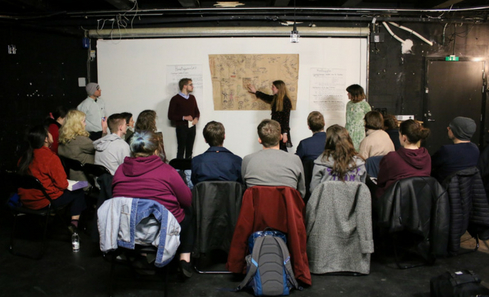
In anticipation of the busy schedule, we had expected a week of intensive learning, but what came as more of a surprise was the nourishing experience of cultural exchange - learning about one another’s cultures and generously sharing our respective experiences of what it is to be a young person.
Cahal Menzies, NYAAG member said: “All of us on this exchange were taken on a journey. Not just a journey within the beautiful country of Denmark, but a journey within ourselves. We all feel invigorated and empowered to try new things. Things such as, painting, film, improvisational comedy and even eating more of our greens. We have also learned to take a look at ourselves and be able to see the great things we have in our country and in our own lives. Everyone in the group, Scottish and Danish, has improved their confidence during the trip.”
In October 2018, TUK will visit NYAAG in Scotland, completing the Transposition exchange. Over the coming months, NYAAG will design a programme of visits showcasing Scotland’s youth arts sector which we are confident will be a rich learning experience for us both.
For more information about NYAAG, the Transposition programme, or Time to Shine, please contact Amy at Amy.Firth@creativescotland.com.
